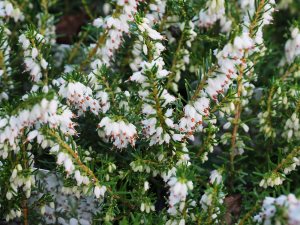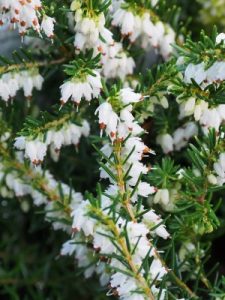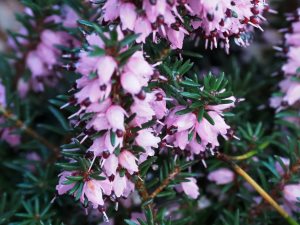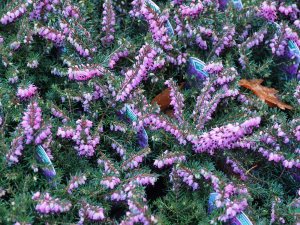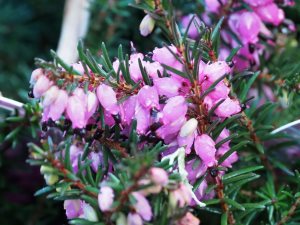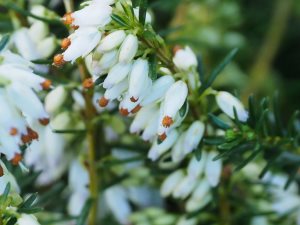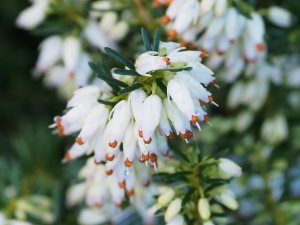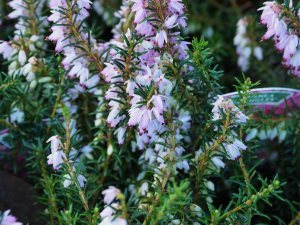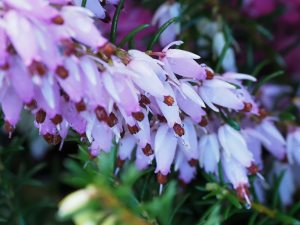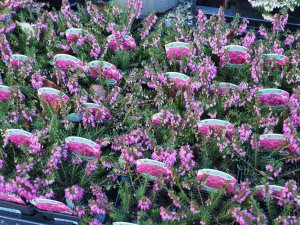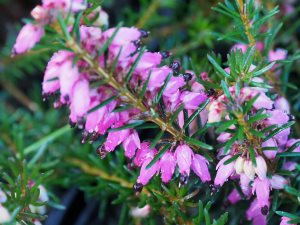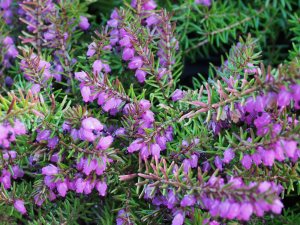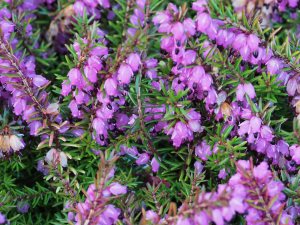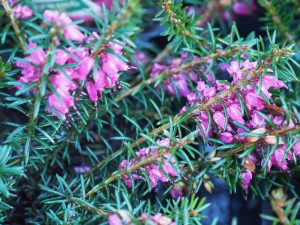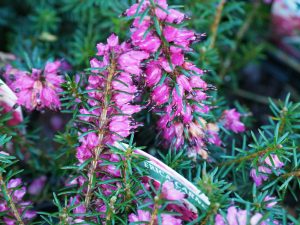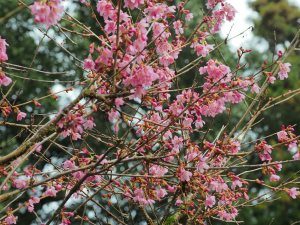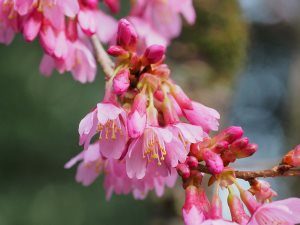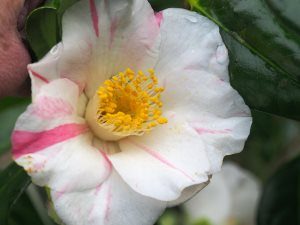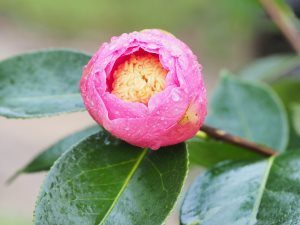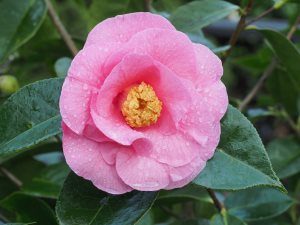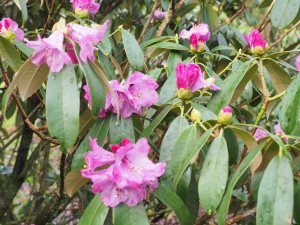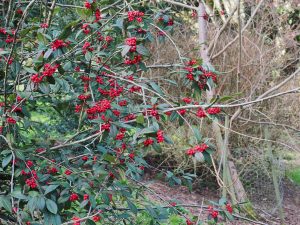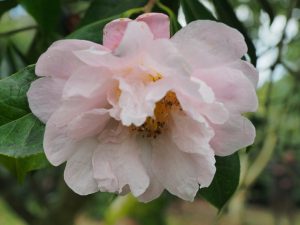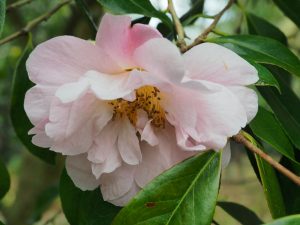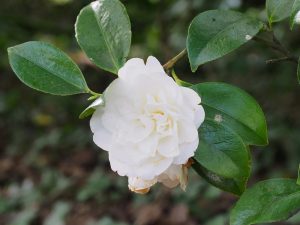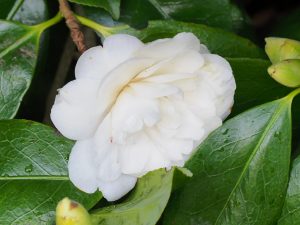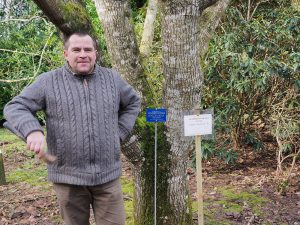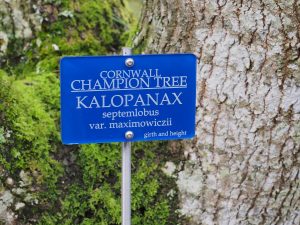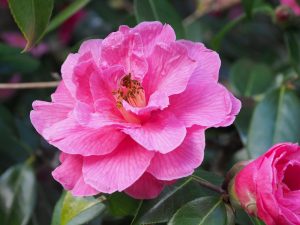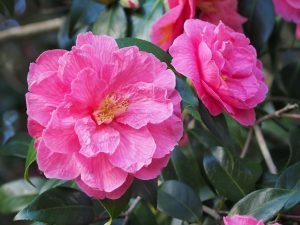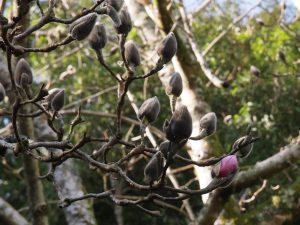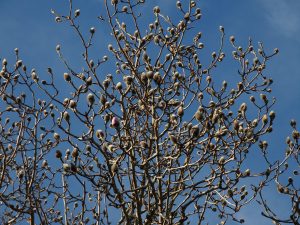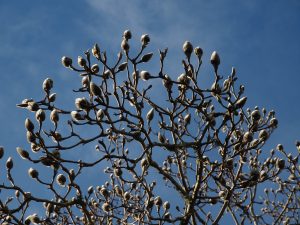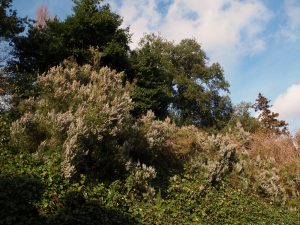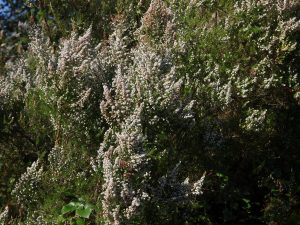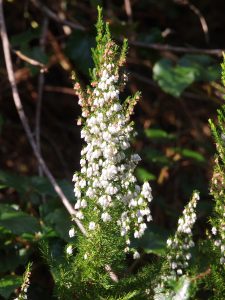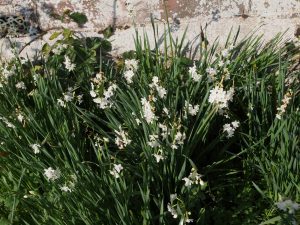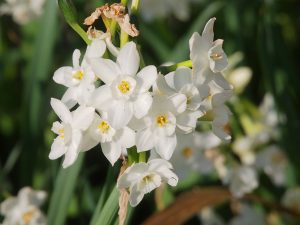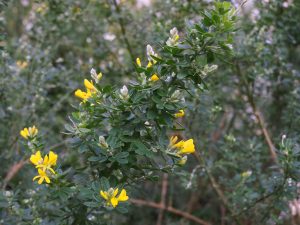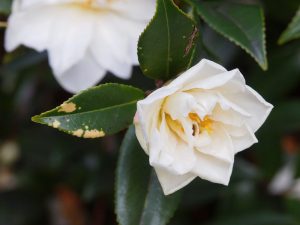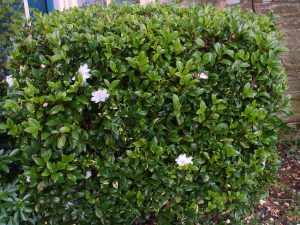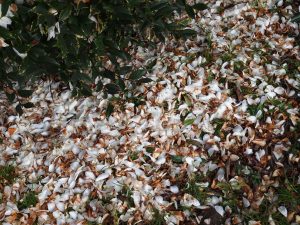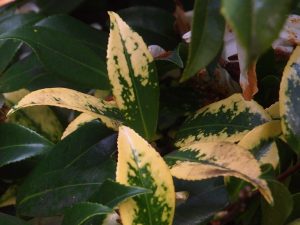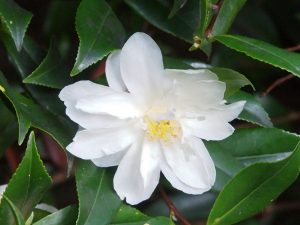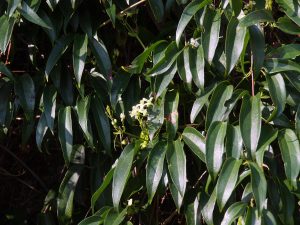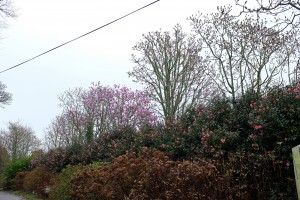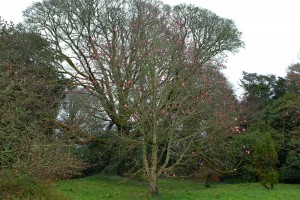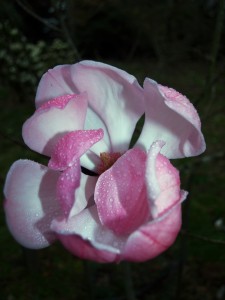2020 – CHW
Spring flowering heathers looking superb in the nursery today despite even more frequent heavy showers.
Erica erigena ‘Irish Dusk’
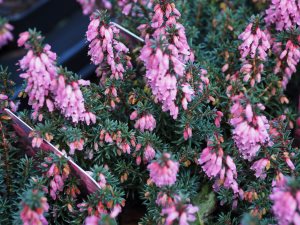
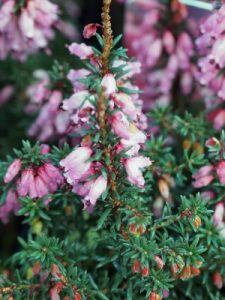
A few bits and pieces starting to make the garden ready for the impending visitor season.Prunus x incam ‘Okame’ is full out below the Tower On The Lawn. The other similar plants in the garden are still a few days behind.
2018 – CHW
A trip with Karol to put out the first of his new home manufactured plant labels today for record Cornish trees. The design is excellent and, in time, will create a new business for us selling them online.
Cotoneaster franchettii still with all its berries intact despite the pheasants and thrushes. Rare for a show like this to survive the winter months intact.
First sign of colour on a couple of flowers on the magnolia through the arch which was out first on 3rd January 2016. A few days ago this blog showed the second outer velvety flower coverings still intact. Most still are so the wind last week has produced a few premature ejaculations.
2016 – CHW
Mum’s former birthday. She would have been 83 today. How time flies! It took two years to sort the headstone and the monumental mason said there was ‘a shortage of granite in Cornwall’ – hence the delay! How very Cornish.
Attached is an article in final form about the longevity of rhododendron species from China to celebrate the centenary of the foundation of The Rhododendron Society in 1916 at Lanarth in Cornwall by J C Williams, P D Williams, C C Eley and J G Millais. We are now the RHS Rhododendron, Camellia and Magnolia Group (RCMG) and Rupert Eley (treasurer), David Millais (chairman) and I (committee member) are still attempting to help run the society/group as well as the same nurseries and gardens which our great grandfathers and great uncles inaugurated and ran 100 years ago. Quite a people and continuity story which I rather doubt many clubs or societies, let alone horticultural ones, could equal. A ‘human interest’ story for the media too at Chelsea in May.
Age of Rhododendrons At Caerhays
Magnolia ‘Shirraz’ is out at the top as at Caerhays (two plants) but this is normally an April late flowerer!
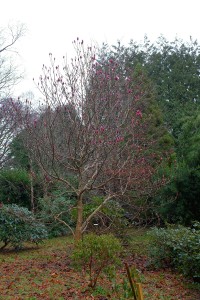
The three big michelias (30 year old) at Burncoose are also out as at Caerhays.
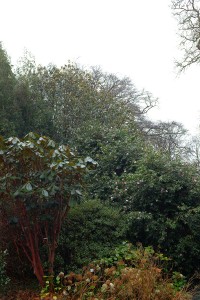
2015 – CHW
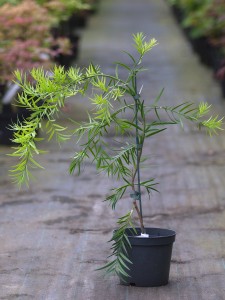
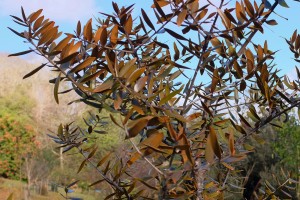
Muddled Afrocarpus falcatus and Agathis australis in my mind and had to go into the garden above main greenhouses to check which is which. They grow side by side. The former is South African and endangered in the wild and the latter Australasian. They are quite different rare conifers in reality.
2002 – FJW
First Magnolia flower – drive hybrid closest to Auk. Garden – wet spell and stormy.
2001 – FJW
Still wet. No Magnolias yet.
1988 – FJW
Mag by steep steps almost out.
1962 – FJW
One flower out on George’s Campbellii.
1928 – JCW
Just as in 1927. Prunus defiscens is open. Mr Laren and G.W. Loder are here.
1927 – JCW
Daffs as in 1922. Sutchuenense x is open and very few buds on any of them. Prunus conradinae ½ open and Prunus salicina is swelling.
1922 – JCW
No daffs except cyclamineus, some Arboreum x Sutchuenense open. Wilsons Prunus mume is the best thing in flower. Several good blood red arboreum about.
1911 – JCW
Very few daffs, snowdrops very good and the aconite, coums also. 7 flowers of Mag clusii open, some of Mag hybrid. Scarlet Rhodo’s show colour, one Barbatum is nice in the wood.
1910 – JCW
Some cyc hybrids, no cyclamineus open, no Campanelli in the drive, very late R praecox very good, also hybrids and coums.
1909 – JCW
Some cyc hybrids and some cyclamineus open, Campanelli in the drive open, well behind 1898.
1906 – JCW
Hard frost, many daffs well on.
1900 – JCW
None of the above open or nearly open.
1898 – JCW
Many (nearly half) the H Irvings out, some Tenby, a good few Caerhays and many Tregony trumpets, nearly all the Cerulus and maximus, minimus nearly over. The first reticulata opens. Minor at its best, 2 or 3 Italian trumpets, several white hoops.




